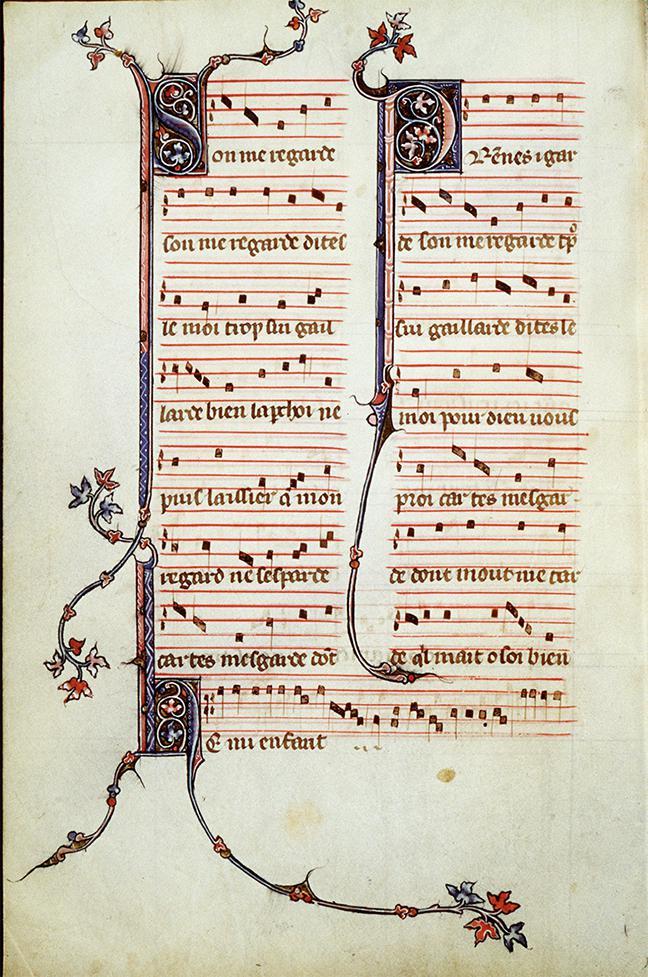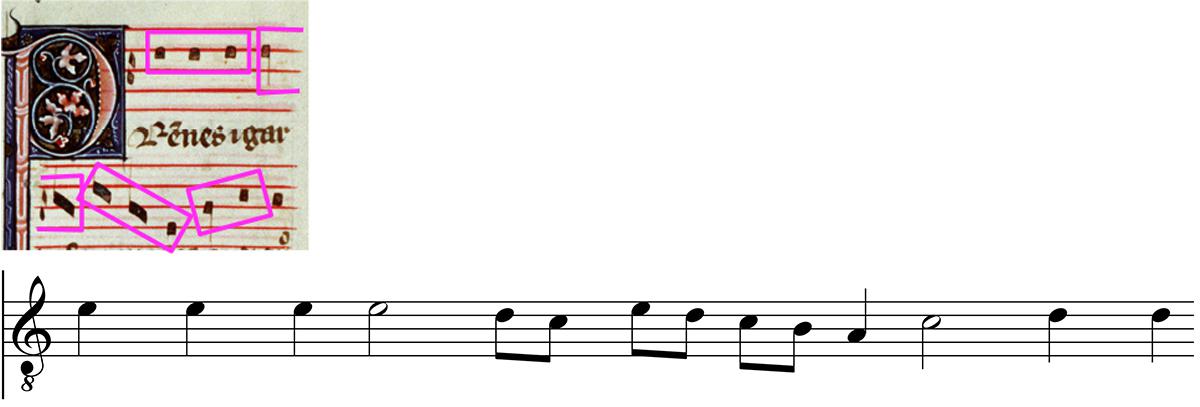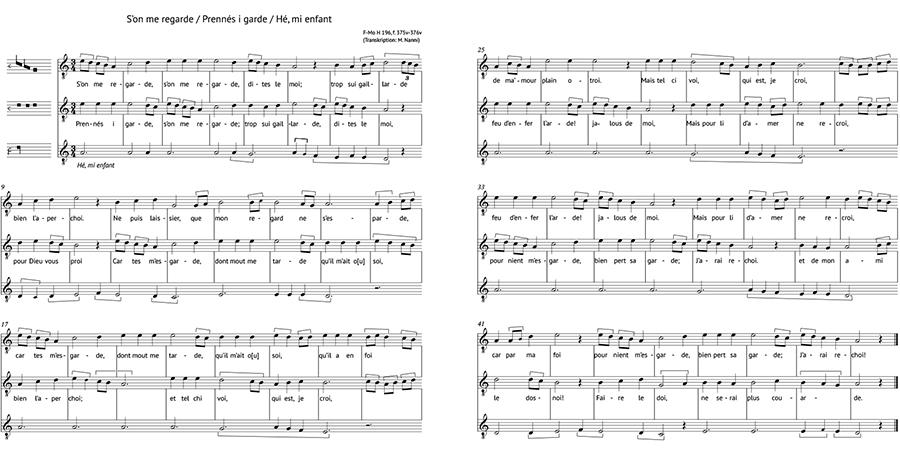EARLY MENSURAL NOTATION
4.11
Transcribing mensural notation II
Franconian
In this article, Prof. Dr. Matteo Nanni gives some hints useful for transcribing medieval music in Franconian notation.

The first page of the three-voices Ars Antiqua Motet S’on me regarde / Prennés i garde/ Hé, mi enfant.
© Montpellier, Bibliothèque interuniversitaire, Section Médecine, H 196, fol. 375v
Click to expand
In the video of the previous step you had the opportunity to learn how to transcribe a composition from the 13th century. The Ars Antiqua motet Amours mi Font Souffrir/En Mai/Flos Filius from the Codex Montpellier H 196 was an example for the phase of transition from the modal to the mensural notation. If the pre-Franconian notation poses some problems concerning the interpretation of the ligatures, the Franconian notation is much clearer.
The motet S’on me Regarde/Prenés i Garde/Hé, mi Enfant is written in the Franconian mensural system. The most important steps you need to address if you transcribe this kind of notation are these:
The first step is to identify the individual voices. After having prepared the five-line staff paper, having controlled the range of the voices and having written the incipit, it is important to think about the time division. In Ars Antiqua music it is always ternary, so you can easily assume a three-four time rhythm.
In order to avoid misunderstandings concerning the metrical phrasing of the music, it is recommended to forgo the use of regular bar lines. It is indeed helpful for a better reading to draw guiding lines through the staffs.
Let us examine first the tenor voice because it presents some difficulties that have to be resolved. Since the Franconian rules apply to all three voices in this piece, the tenor does not have to be transcribed according to the modal principles, but instead it has to follow both the mensural rules of perfection and alteration and the ligature rules.

Tenor voice, part one
Click to expand
The first longa is therefore perfect (similis ante similem perfecta; similar before the similar is perfect) and the second is imperfected by the succeeding brevis. The first ligature you find in this voice is a brevis-longa. Please note that the brevis of the ligature makes the preceding longa imperfect, while the second part of the ligature – the longa – remains perfect. The reason for this is that the ligature is followed by a longa. After the first ligature in the tenor voice we can easily recognise a descending plica longa.
After the crotchet rest (quarter rest), which is represented by a vertical stroke occupying two spaces, a plica longa follows. And after a series of two-note ligatures we find a quite tricky passage: longa, brevis, brevis, brevis-longa ligature.

Tenor voice, part two
Click to expand
Here we have to avoid altering the second brevis, because together with the first note of the ligature, which is also a brevis, the ternary unity is reached. If you imagine this passage notated like this [L B B B L], it may become clearer why we are not allowed to make an alteration.
Looking at the upper voices we realise that they do not present any great difficulties. Both voices make large use of longae, breves and ligatures cum opposite proprietate (two semi-breves). To make your transcription efficient, you are advised to identify the ternary units (perfections) right at the outset.
Finally, let us take a brief look at the motetus. Right at the beginning we can see that as the three breves follow each other, they form a unity (perfectio). The next note, the longa, however, is not perfect because it is made imperfect by the following ligature. Please note that if a ligature, such as the one here, has the value of a brevis, it will imperfect the preceding longa.

Motetus
Click to expand
The voices of this kind of motets start at the three coloured initials. Please note that three closely grouped notes in a semi-brevis shape (as here in the fourth line of the upper voice) are so-called currentes, a remnant of modal notation. They are commonly understood to substitute one brevis. In our case, three currentes would be transcribed as triplet quavers (eighth notes). Also, while transcribing this kind of notation, be always aware of possible plicae.
Please try to follow the entire transcription of the tenor to the end.

Transcription
Click to expand
License
Copyright: University of Basel
Téléchargements
